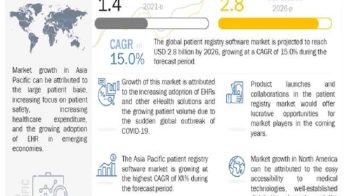Rise in aging population and rising incidences of diabetes, along with technological advancements, government initiatives, and rising awareness regarding new technologies are the major factors fueling the growth of global wound dressings market. This market is expected to grow from USD 6.31 billion in 2016 to USD 8.46 billion by 2021, at a CAGR of 6.0% from 2016 to 2021.
Various organizations are taking initiatives to create awareness and promote wound care. For instance, in June 2014, Wound Care Center and Healogics, Inc. (U.S.) joined hands to raise awareness for the prevention and importance of treating chronic wounds by organizing National Wound Care Awareness Week in the U.S. Such initiatives are expected to boost the demand for wound care products, consequently leading to growth in the wound dressings market.
Furthermore, conferences by various healthcare organizations also help create awareness. For instance, the Fourth Annual Meeting of the American College of Wound Healing and Tissue Repair was organized in December 2014 to discuss policies and regulatory issues currently faced by the companies operational in the market as well as technological advancements that can transform the market. In May 2014, the European Wound Management Association organized its 24th conference in cooperation with the Spanish Group for the Study and Advice on Pressure Ulcers and Chronic Wounds in Madrid, Spain. The conference was focused on discussing latest developments in wound management. Such activities help spread awareness regarding the available and upcoming products and technologies in the market. They also encourage end users to opt for new techniques; thereby, driving the growth of the wound dressings market.
Diabetic foot ulcer is a major complication of diabetes. Advanced wound care products are required for its treatment as the wound healing process is slower in diabetic people. According to Journal of Clinical Investigation, 15% of the total diabetic population suffers from diabetic foot ulcers. Wound dressing products, such as artificial skin and skin substitutes, alginates, foam dressings, and negative pressure therapy devices are widely used for the treatment of non-healing diabetic foot ulcers.
According to the International Diabetes Federation, 387 million people suffered from diabetes in 2014, globally, and the number is expected to rise to 592 million by 2035. According to the Centers for Disease Control and Prevention (CDC), up to one in three American adults are expected to suffer from diabetes by 2050. Therefore, with the rising prevalence of diabetes, the demand of wound dressing products is also expected to increase.
Advanced wound care accelerates the healing process for many chronic wounds by providing and promoting a moist environment. Alginate dressings, one of the type of advanced wound dressings, reduce pain and keep the tissues moist during healing; they are also biodegradable. These advantages are expected to drive the growth of the alginate dressings segment and making it fastest-growing segment.
Emerging economies such as India and China offer significant growth opportunities. Asian economies offer high-growth potential to this market due to a large population base and increasing healthcare expenditures in the region.

